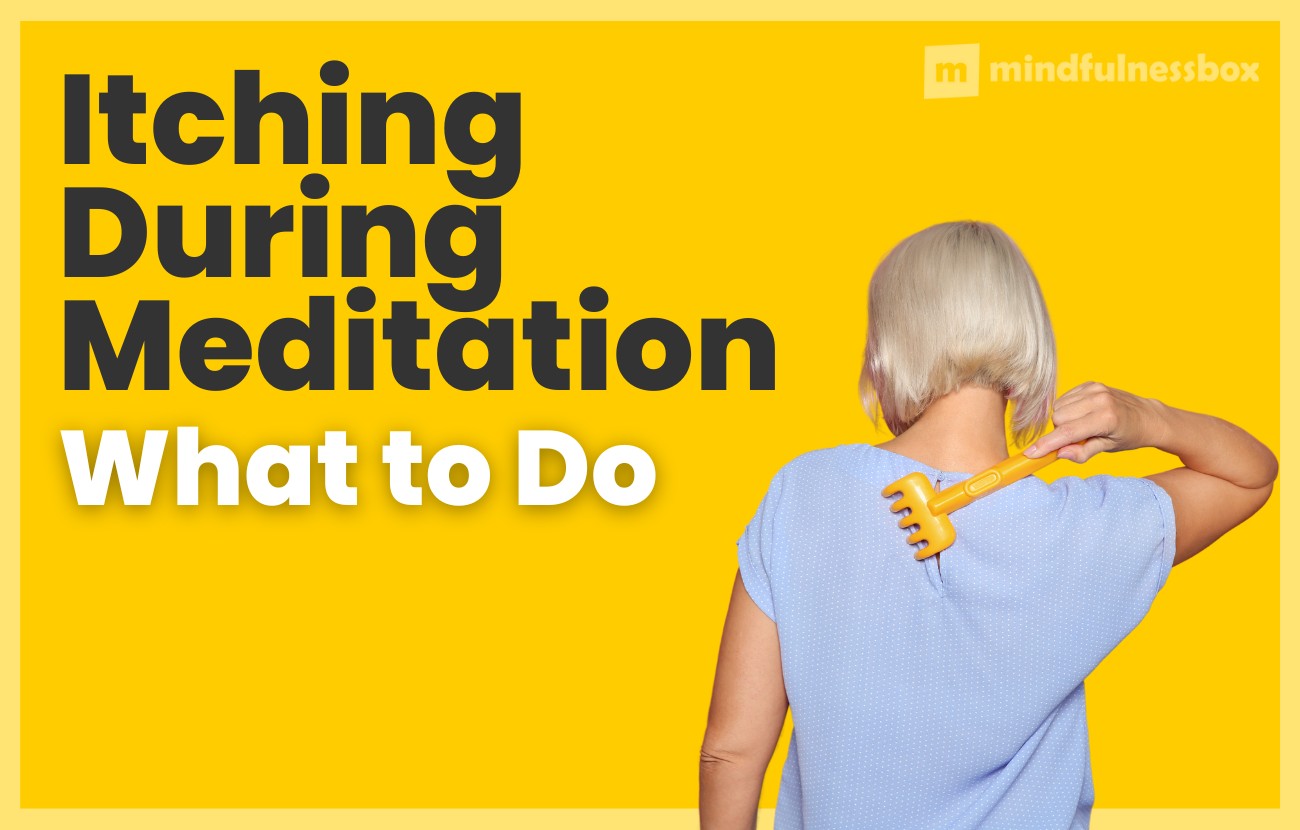While scratching an itch may “feel” like failing at your meditation practice, it isn’t. When you’re experiencing an itch during meditation, follow the ancient rule—if it itches, scratch it. Just make sure to do so mindfully.
Inevitably, just as you get settled into your meditation, it happens—an itch.
These 100 meditation scripts were created to help beginner and intermediate meditators practice key mindfulness concepts like self-love, forgiveness, gratitude, and inner peace.
Designed to fit into busy schedules, each meditation script lasts 3-5 minutes. Perfect for starting or closing a group meditation; for yoga, coaching, or therapy sessions; or for your personal meditation practice.
Your mind starts to focus on that one single area of annoyance on your body, and all of a sudden, it’s all you can think about.
Sitting with an itchy sensation can benefit your meditation practice, but sometimes, there’s no avoiding it.
And that’s okay.
Can you scratch an itch during meditation?
Yes, you can scratch an itch during meditation.
If you are feeling itchy during your practice, go ahead and scratch. It’s natural for this to happen. Just as your mind will inevitably run away with your thoughts as much as you may try to focus on your breath, sensations during meditation will arise, too.
And they’re not always within your control, especially once your mind focuses on them and decides to use them as a distraction.
(Pay attention to your own impulses while reading this article, now that we’re talking about itching and scratching. Are you finding that your body is presenting you with itchy sensations—more so than usual?).
But something that IS within your control is to attempt to scratch mindfully rather than automatically.
How to mindfully scratch an itch
Seriously: in the spirit of meditation, you can mindfully scratch an itch.
Stay with me here.
Normally when you scratch yourself, it’s completely automatic. It itches, so you scratch it.
During meditation, scratching feels “forbidden” because you’re supposed to just be focused on your breath or a mantra or an object of concentration. But avoiding scratching is difficult because your mind can find itself obsessed with the itchy feeling and with the desire to resolve it.
So, allow yourself to scratch. But do so slowly and mindfully.
- First, notice how the itchy sensation feels. Is it throbbing? Is it light, or intense? How much of an urge are you feeling to scratch? Is it a low-level desire, or does it feel like an emergency? Sit with the feeling for a bit.
- Second, if the itchy feeling isn’t subsiding, allow yourself to move from resistance to permission. You will allow yourself to scratch and you’ll feel okay about it.
- Third, move your hand to the area you need to scratch. Do so slowly and intentionally rather than quickly and automatically. Pay attention to the sensation of scratching in your mind. Be aware of when you scratch, where you scratch, how quickly or slowly you go about it. Notice when the itchy feeling starts to subside.
You will notice that there are many levels to this sensation—from the very beginning urges, all the way through until after you’ve actually scratched and the urge is diminished or gone.
Why you should experiment with not scratching during meditation
So if it’s okay to scratch an itch during meditation, why resist it at all?
You don’t have to resist it if you don’t want to. If it itches, scratch it (mindfully).
But your mind is a laboratory, and meditation is a way to learn more about how your own mind operates. The rising and falling of the urge to itch is a valuable contribution to helping you better understand the mind-body connection.
When I participated in a 10-day silent meditation retreat, we were encouraged to avoid scratching or movement in general—even though we meditated for an hour or more at a time, many times per day. That meant sitting through all kinds of leg pain, weird throbbing, and itches.
Instead of resisting these bodily sensations or attempting to alleviate them by repositioning ourselves or scratching itches, we were encouraged to focus our full attention on the pain or the itch, and observe nonjudgmentally.
The goal is to reduce our psychological suffering by noticing that we’re often attaching negative feelings to bodily sensations. But when we take time to really sit with the feeling and observe the sensation, we find that it’s sometimes neither negative nor positive. It’s just a feeling.
Of course, sometimes there really is physical pain. And sometimes, psychological pain doesn’t go away after observation.
But in other cases, the throbbing, the pain and the itching transforms into just… a feeling. Weirdly, it can even become pleasant. A throbbing in your leg or an itch in your foot can transform into a neutral or pleasant sensation that’s closer to heat, or tingling. Then, you can observe this sensation spread throughout your body.
In my experience, sitting with an itch or with leg pain gave me invaluable first-hand experience with the mind-body connection, and the difference between physical and psychological suffering.
If you’re curious to explore this yourself, consider experimenting with not scratching during meditation.
What do you do if your meditation is interrupted by an itch or sneeze?
When your meditation is interrupted by your own sneeze, or someone else’s, or perhaps by the necessity to scratch an itch, it can be hard to settle back into the groove afterwards.
Don’t give yourself a hard time. Distraction and interruptions happen.
Remember also that meditation is a practice to create calm and build mindfulness in everyday life.
And everyday life includes sneezes and itches and scratches.
So when those interruptions arise, remind yourself that you’re getting bonus practice at being mindful out in the real world.
Acknowledge the interruption, and allow yourself some space to settle back in. Then focus again on your breathing, mantra, or object of concentration until you’re more fully in the experience of meditation again.
Frequently Asked Questions
What happens if you sneeze during meditation?
If you sneeze during meditation, don’t worry.
Just try to stay focused on your practice and don’t let the sneeze distract you. Because sneezes come on so fast, there isn’t really a way to “sneeze mindfully”. So just do your best to ease yourself back into your practice after sneezing.
Some people worry about sneezing during meditation because they may be meditating as part of a group, and don’t want to disturb others.
While sneezing can be a distraction for others, keep in mind that it’s neither negative nor positive. It’s out of your control, and it’s up to the other people who are meditating to observe the sound you make nonjudgmentally.

My mindfulness practice kicked off in 2016 with a ten-day silent retreat. Since then, I’ve read dozens of books about mindfulness and completed hundreds of hours of meditation. Thinking about what makes humans happy, calm, and peaceful is endlessly fascinating to me.


